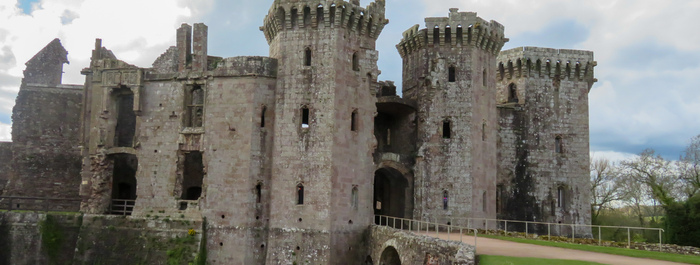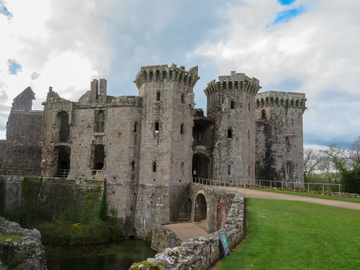Castle Focus: Castell Rhaglan / Raglan Castle
Castle Focus: Castell Rhaglan / Raglan CastleThis picturesque giant has its origins in the late Medieval period, and in comparison to a lot of Wales’ other castles, its decorative flair has stood the test of time. Perhaps its most iconic feature is its hexagonal Great Tower and spiked gatehouse. It really treads a fine line between a grand palace and a mighty fortress. It sits surrounded by picturesque Welsh countryside around Monmouthshire, with views of rolling hills for miles around, and rugged mountains in the distance.


Originally built in the mid-15th Century, Raglan’s construction was commissioned by Sir William ap Thomas, also known as the Blue Knight of Gwent. The then manor was passed down to his son William Herbert, the First Earl of Pembroke, who proceeded to add some of the castle’s more iconic fortifications, such as its Great Tower and the machicolations (the openings at the top of the tower through which soldiers could throw down rocks, hot oil, and etc. when under siege). The castle then had a relatively peaceful period, with construction on the fortresses finishing in 1525. The next modifications made to the castle were made more than six decades later in 1589, during the time of William Somerset, third Earl of Worcester, the castle entered its last major phase of construction. Additions consisted of a new hammer-beam roof to the hall and a long gallery on the second floor overlooking the Fountain Court.

The castle’s fall to ruin began with the English Civil War, where the castle was besieged by Parliamentarians led by Sir Thomas Fairfax in 1646. The castle was shelled with mortar batteries and eventually, Henry Somerset, 1st Marquis of Worcester, surrendered Raglan, and the castle was never fully repaired. In 1938, Raglan Castle was placed in the guardianship of the Commissioners of HM Works by the 10th Duke of Beaufort. For two decades following the end of World War II, extensive conservation efforts were conducted to maintain the castle. Today, it is maintained by CADW, who do a wonderful job on behalf of the Secretary of State for Wales!


Raglan is possibly the best-preserved medieval castle I’ve seen so far. Its courtyard’s original cobblestones still stand to this day and the architectural features have managed to survive both mortar shells and the harsh weather of Wales. If you look at the window frames in the pictures above, or some of the art chiselled into the walls, an extraordinary level of the original care and craftsmanship that went into Raglan over 400 years ago remains.
We thoroughly recommend visiting this Cadw site, particularly during InCharacter’s Children’s Festival of Welsh History, when we’ll be bringing ‘Y Mabinogi and Other Tales’ to its grounds!



Comments ()
Write comment